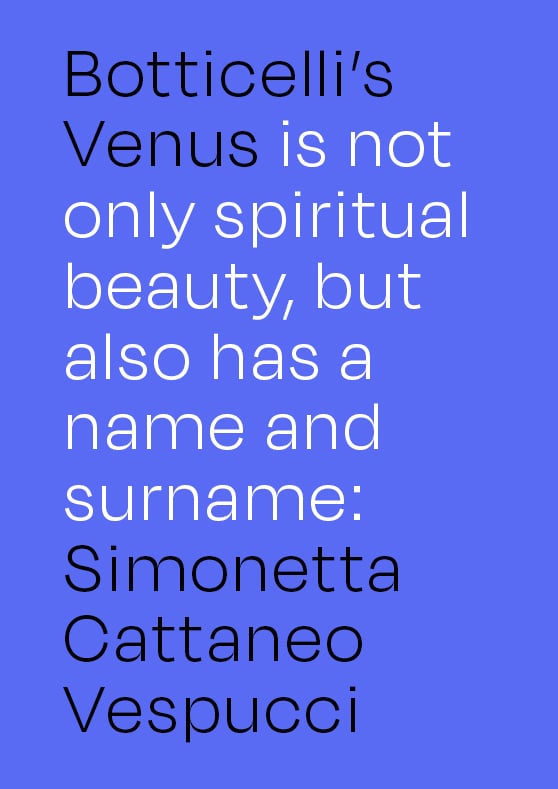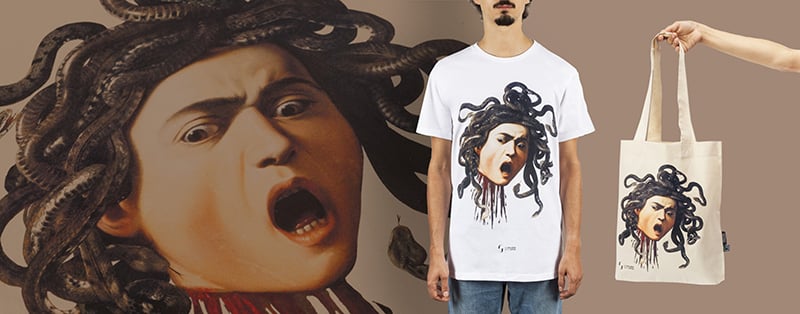Our articles
Featured
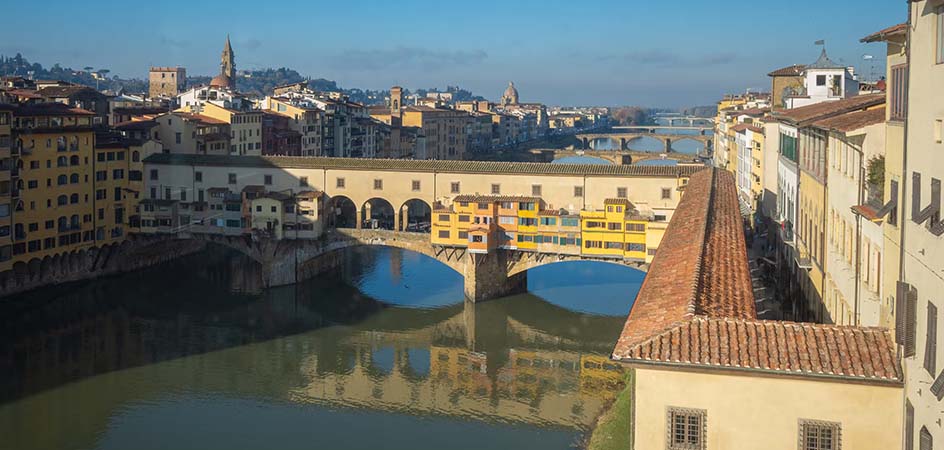
The Corridoio Vasariano: a striking elevated passage through history and the cityscape of Florence
Unprecedented, accessible and spectacular, the Corridoio Vasariano reopened to the public in late 2024 after an eight-year restoration that now allows visitors to walk the entire length of this historic passageway: 750 covered metres linking the former Medici residence of Palazzo Pitti with the seat of government, Palazzo Vecchio.
The brainchild of Giorgio Vasari, the “passetto fiorentino”—as it was known at the time of its construction—offers visitors a truly unique experience. Here’s what to expect.
BeCulture facilitates and accompanies travellers, art enthusiasts and the curious in visiting cities, museums and cultural institutions.
NEWSLETTER
Designed as a space for travelers and art and culture enthusiasts, BeCulture accompanies visitors before, during and after the visit.
In-depth information and thematic itineraries, tickets and our wide selection of books, official guides and certified and sustainable merchandise.
Latest articles
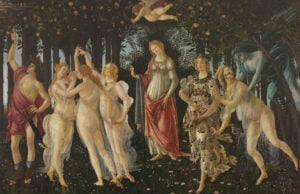
What is BeCulture?
BeCulture is the platform dedicated to culture, created to accompany and facilitate travellers, art enthusiasts and the curious in visiting cities, museums and cultural institutions. Through in-depth information and thematic routes, you can create a customised visit built around your interests. A unique and secure purchase that includes tickets, publishing and official and certified merchandise. AVOID THE
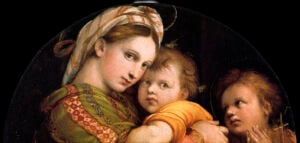
Raffaello’s Madonna della Seggiola, a masterpiece of rare familial intimacy housed in Palazzo Pitti
Displayed in the Sala di Saturno at Palazzo Pitti is one of Raffaello Sanzio’s most celebrated works: the Madonna col Bambino e san Giovannino, commonly known as Madonna della Seggiola. Set in an ornate seventeenth-century frame, the painting captivates for its deeply intimate tone – almost like a window into a tender moment of family life.
Still considered one of the Urbino master’s finest creations, little is known about its origins.
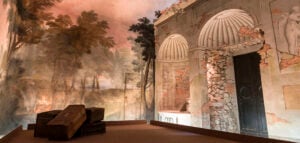
Casa Martelli: an immersive journey into the life of an ancient Florentine dynasty
To those unfamiliar with Florence, the name may not ring a bell. Yet the Martelli
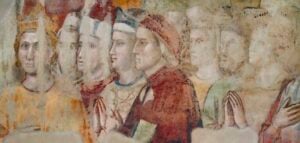
Dante at the Gallerie degli Uffizi: a journey through artworks inspired by the Supreme Poet
Few authors have inspired artists of the calibre of Giotto, Botticelli, Raffaello and Michelangelo as much as Dante Alighieri (1265–1321), still world-renowned for his Divina Commedia. A man of prose and poetry, Dante was forced to leave his native Florence due to political strife. Yet the city still preserves many traces of his enduring fame.
Like a modern-day Virgil, we will guide you through the halls of the Gallerie degli Uffizi to discover some of the most evocative works linked to the Supreme Poet and his words.
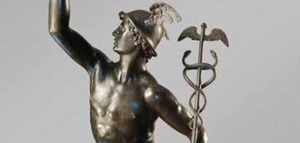
Giambologna’s Mercurio: an unrivalled icon of Florentine Mannerism
Determined, talented and tenacious, Giambologna – born Jean de Boulogne – is one of the leading figures of sixteenth-century Italy, and even today, anyone visiting Florence cannot help but admire his works. Among the most remarkable, celebrated and widely reproduced is certainly his Mercurio volante (1580, Florence, Museo del Bargello), now a true symbol of Mannerism and its daring formal balancing acts.
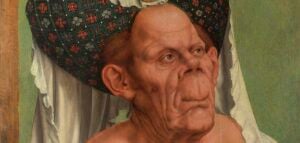
The beauty of ugliness: a fresh look at art between the 15th and 16th Centuries
Throughout the history of Western art, Ugliness has undergone a fascinating evolution. Initially viewed as a mere negation of beauty, it gradually acquired the status of an aesthetic category. This shift in taste and culture makes it even harder to define what is considered beautiful or ugly in art.
We’ve selected a few themes that highlight the concept of ugliness between the 15th and 16th centuries.
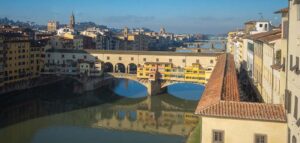
The Corridoio Vasariano: a striking elevated passage through history and the cityscape of Florence
Unprecedented, accessible and spectacular, the Corridoio Vasariano reopened to the public in late 2024 after an eight-year restoration that now allows visitors to walk the entire length of this historic passageway: 750 covered metres linking the former Medici residence of Palazzo Pitti with the seat of government, Palazzo Vecchio.
The brainchild of Giorgio Vasari, the “passetto fiorentino”—as it was known at the time of its construction—offers visitors a truly unique experience. Here’s what to expect.

Raffaello’s Madonna della Seggiola, a masterpiece of rare familial intimacy housed in Palazzo Pitti
Displayed in the Sala di Saturno at Palazzo Pitti is one of Raffaello Sanzio’s most celebrated works: the Madonna col Bambino e san Giovannino, commonly known as Madonna della Seggiola. Set in an ornate seventeenth-century frame, the painting captivates for its deeply intimate tone – almost like a window into a tender moment of family life.
Still considered one of the Urbino master’s finest creations, little is known about its origins.

Casa Martelli: an immersive journey into the life of an ancient Florentine dynasty
To those unfamiliar with Florence, the name may not ring a bell. Yet the Martelli were a powerful noble family well known in the city

Dante at the Gallerie degli Uffizi: a journey through artworks inspired by the Supreme Poet
Few authors have inspired artists of the calibre of Giotto, Botticelli, Raffaello and Michelangelo as much as Dante Alighieri (1265–1321), still world-renowned for his Divina Commedia. A man of prose and poetry, Dante was forced to leave his native Florence due to political strife. Yet the city still preserves many traces of his enduring fame.
Like a modern-day Virgil, we will guide you through the halls of the Gallerie degli Uffizi to discover some of the most evocative works linked to the Supreme Poet and his words.

Giambologna’s Mercurio: an unrivalled icon of Florentine Mannerism
Determined, talented and tenacious, Giambologna – born Jean de Boulogne – is one of the leading figures of sixteenth-century Italy, and even today, anyone visiting Florence cannot help but admire his works. Among the most remarkable, celebrated and widely reproduced is certainly his Mercurio volante (1580, Florence, Museo del Bargello), now a true symbol of Mannerism and its daring formal balancing acts.

The beauty of ugliness: a fresh look at art between the 15th and 16th Centuries
Throughout the history of Western art, Ugliness has undergone a fascinating evolution. Initially viewed as a mere negation of beauty, it gradually acquired the status of an aesthetic category. This shift in taste and culture makes it even harder to define what is considered beautiful or ugly in art.
We’ve selected a few themes that highlight the concept of ugliness between the 15th and 16th centuries.


